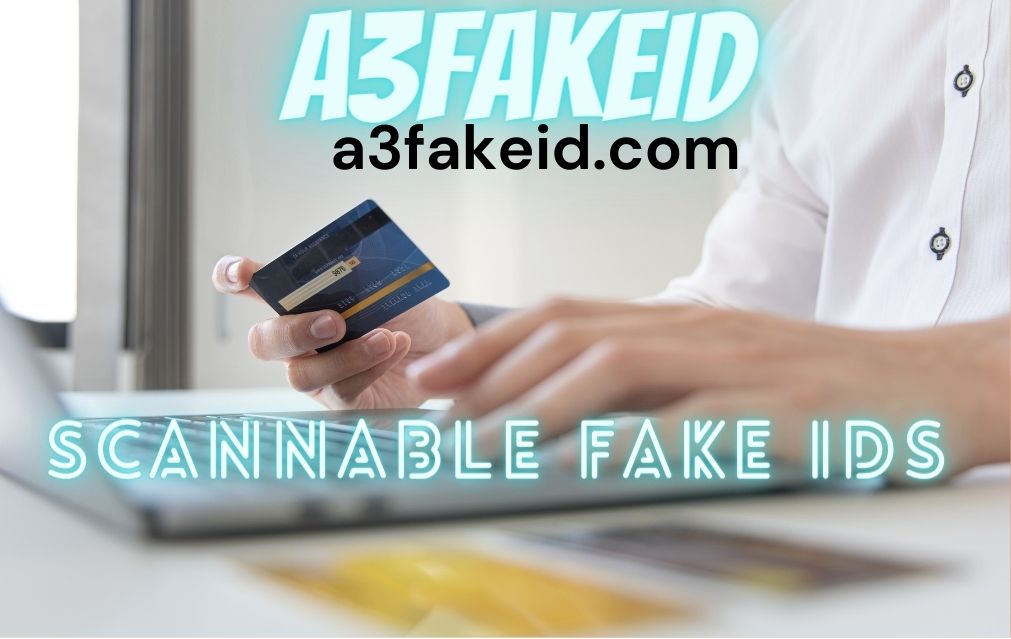delve into the top 10 key differences between a Scannable Fake IDs and a genuine driver’s license:
1. Issuing Authority: The most fundamental difference is the issuing authority. A real driver’s license is issued by a government agency, such as the Department of Motor Vehicles (DMV), while a scannable fake ID is not government-issued.
2. Data Accuracy: Genuine driver’s licenses contain accurate, government-verified information about the holder, including their name, date of birth, address, and a unique driver’s license number. Scannable fake IDs may contain fictitious or inaccurate information.
3. Holograms and Security Features: Real driver’s licenses typically incorporate complex security features like holograms, microprinting, UV ink, and watermarks. Scannable fake IDs may attempt to replicate these features but often fall short in terms of authenticity and detail.
4. Signature Match: Genuine driver’s licenses feature a signature of the license holder, which is verified and compared to the one provided during the application process. Scannable fake IDs may include a signature, but it may not match the holder’s real signature.
5. Validity Period: A real driver’s license has a specific expiration date that corresponds to the holder’s age and the state’s licensing regulations. Scannable fake IDs may not accurately reflect this information.
6. Material and Texture: Authentic driver’s licenses are typically made from specific materials with distinct textures that are challenging to replicate. Scannable fake IDs may not capture these tactile qualities accurately.
7. Design Elements: While scannable fake IDs attempt to mimic the design and layout of genuine driver’s licenses, variations and discrepancies may exist, especially as state designs change over time.
8. Barcode and Magnetic Stripe Data: A significant difference lies in the accuracy of the data encoded on the barcode and magnetic stripe. Real driver’s licenses have data that matches the information visibly printed on the card, whereas scannable fake IDs may not align perfectly.
9. State-Specific Features: Many real driver’s licenses have state-specific design elements and security features that are challenging to replicate accurately. Scannable fake IDs may struggle to capture these unique aspects.
10. Legal Consequences: Possessing or using a scannable fake ID for illegal activities, such as purchasing alcohol underage, is a criminal offense and can lead to serious legal consequences, including fines, probation, and potential imprisonment. Genuine driver’s licenses, on the other hand, are legal documents and are subject to government regulations and penalties for misuse.
In summary, while scannable fake IDs may resemble real driver’s licenses at first glance, there are notable differences in terms of data accuracy, security features, material quality, and legal implications. It’s essential to abide by the laws and regulations of your jurisdiction and avoid any involvement in the production or use of fake IDs.
Conclusion :
In conclusion, the differences between a scannable fake ID and a genuine driver’s license extend beyond surface appearances. While scannable fake IDs are designed to mimic the look and functionality of real IDs, they often fall short in terms of accuracy, security features, and legal legitimacy.
Real driver’s licenses are issued by government authorities and contain verified personal information, including accurate names, dates of birth, and addresses. They also incorporate intricate security measures like holograms and UV ink, making them difficult to replicate convincingly. Genuine driver’s licenses adhere to specific materials and design standards, further setting them apart from counterfeits.
Moreover, the legal consequences of using a fake ID are significant. Possessing or using a scannable fake ID for illegal activities, such as purchasing alcohol underage or engaging in identity fraud, can lead to severe penalties, including fines, probation, or even imprisonment. In contrast, authentic driver’s licenses are government-issued documents, and any misuse is subject to legal repercussions. For more information visit here.
It is of utmost importance to respect and adhere to the laws and regulations of your jurisdiction. Engaging in the production or use of fake IDs not only risks legal consequences but also undermines the integrity of identification systems and poses risks to society as a whole. Making lawful choices and seeking guidance from appropriate authorities when faced with identification or age-related issues is the responsible and ethical course of action.



